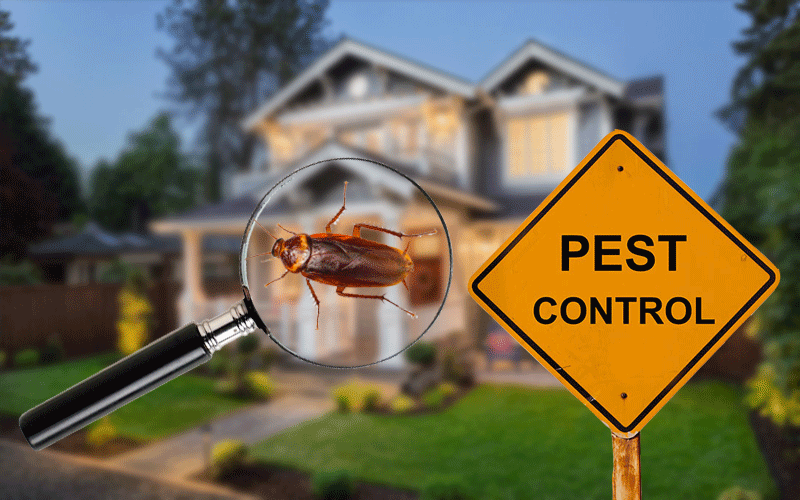Efficient A1 Bed Bug Treatment in Charlotte - Safe and Proven Approaches
Efficient A1 Bed Bug Treatment in Charlotte - Safe and Proven Approaches
Blog Article
Bed Pest Therapy Break Down: Contrasting Chemical Vs. Non-Chemical Solutions
In the world of parasite control, particularly when dealing with the relentless concern of bed bugs, the option between chemical and non-chemical therapy services can be a pivotal one. Both approaches supply unique benefits and downsides, influencing factors such as efficiency, security considerations, and general expense. By checking out the nuanced information of each technique, a clearer understanding of which path to pursue in addressing a bed bug infestation can be acquired.
Performance of Chemical Therapies
Chemical treatments for bed pest invasions have actually been widely acknowledged for their powerful and rapid efficacy in removing these insects. When taking into consideration the effectiveness of chemical therapies, it is vital to comprehend that they can supply a quick and extensive option to a bed bug problem.
Additionally, chemical therapies have the advantage of supplying residual results, suggesting that they can remain to get rid of bed pests also after the preliminary application. This recurring activity is specifically valuable in combating any kind of potential re-infestations. Additionally, the quick action of chemical treatments can bring relief to people facing serious bed bug problems, enabling them to regain control of their living spaces swiftly.
Security Worry About Chemical Solutions
One critical aspect that requires cautious consideration when utilizing chemical solutions for bed pest treatment is making sure the security of occupants and the environment. Exposure to particular chemicals used in bed insect treatments can lead to respiratory problems, skin irritability, or other adverse responses, specifically in people with pre-existing problems or level of sensitivities.
Moreover, the ecological impact of chemical solutions is another significant factor to consider. Some chemicals made use of in bed bug therapies might be hazardous to valuable bugs, wild animals, and communities if they leach into the soil or water systems. It is vital to make use of chemical treatments carefully, complying with security guidelines, and thinking about much less toxic alternatives to minimize these risks and ensure the secure and effective administration of bed insect invasions.
Benefits of Non-Chemical Approaches
Considering the possible safety and security worries and ecological impact connected with chemical options for bed insect treatment, exploring non-chemical strategies provides an appealing choice with a number of distinctive advantages. Non-chemical methods supply a much safer option for families, particularly those with family pets, kids, or people conscious severe chemicals. These strategies eliminate the risks of exposure to toxic substances, reducing the capacity for adverse health and wellness effects. Moreover, non-chemical treatments are eco-friendly, as they do not add to air or water air pollution, making them a sustainable selection for insect control.
Furthermore, non-chemical remedies can be reliable in targeting bed termite insecticide pests, consisting of hard-to-reach locations where chemical therapies might not penetrate. Approaches such as heat therapy, vacuuming, steam cleaning, and cushion encasements offer detailed eradication without using unsafe chemicals. In addition, non-chemical techniques can be much less disruptive, calling for marginal annual pest control service preparation and permitting quicker reentry into treated locations. On the whole, deciding for non-chemical bed bug therapy techniques not only focuses on safety and environmental management however additionally makes certain thorough and reliable insect control.
Limitations of Non-Chemical Treatments

Additionally, non-chemical treatments commonly need numerous applications to attain successful removal. This can be taxing and might not always assure complete removal of all bed insects and their eggs, specifically in covert or hard-to-reach places.
Moreover, the success of non-chemical treatments greatly relies on proper execution and thoroughness, which can be challenging for individuals without specialist knowledge. Inadequate application of non-chemical methods might result in insufficient obliteration, leading to persistent infestations and the requirement for extra therapies.
Therefore, while non-chemical therapies have their advantages, it is necessary to recognize these constraints and consider them when figuring out the most reliable technique for handling bed pest invasions.
Price Contrast: Chemical Vs. Non-Chemical Options
Offered the constraints linked with non-chemical treatments, a vital facet to assess in the context of bed pest management is the expense contrast between chemical and non-chemical alternatives. In contrast, non-chemical therapies like heat therapy or steam can be a lot more pricey, with prices varying from $1,000 to $6,000 for a whole home. While the preliminary price of chemical therapies might appear reduced, several therapies might be called for to completely remove the problem, potentially enhancing the total expense.
Verdict

Taking into consideration the prospective safety and security issues and ecological influence connected with chemical services for bed insect treatment, exploring non-chemical approaches presents a promising alternative with a number of unique advantages.Offered the constraints associated with non-chemical therapies, an important facet to evaluate in the context of bed pest monitoring is the expense comparison in between chemical and non-chemical choices. In contrast, non-chemical treatments like heat treatment or heavy steam can be more pricey, with expenses varying from $1,000 to $6,000 for an entire home. While the initial expense of chemical therapies may seem reduced, numerous treatments might be required to totally eradicate the invasion, potentially raising the total price.In conclusion, when comparing chemical and non-chemical bed pest therapy alternatives, it is essential to think about performance, safety, benefits, limitations, and expense.
Report this page